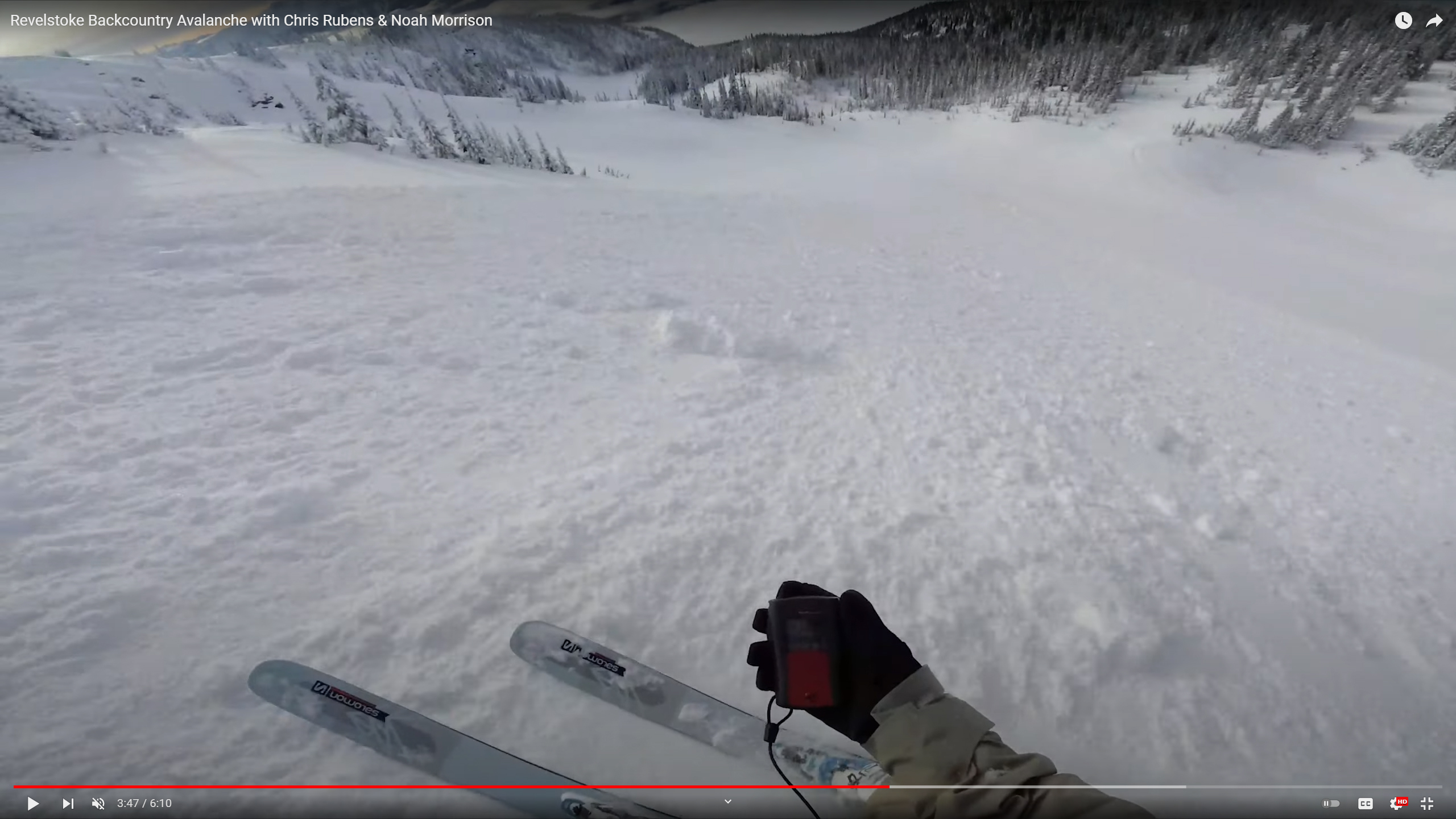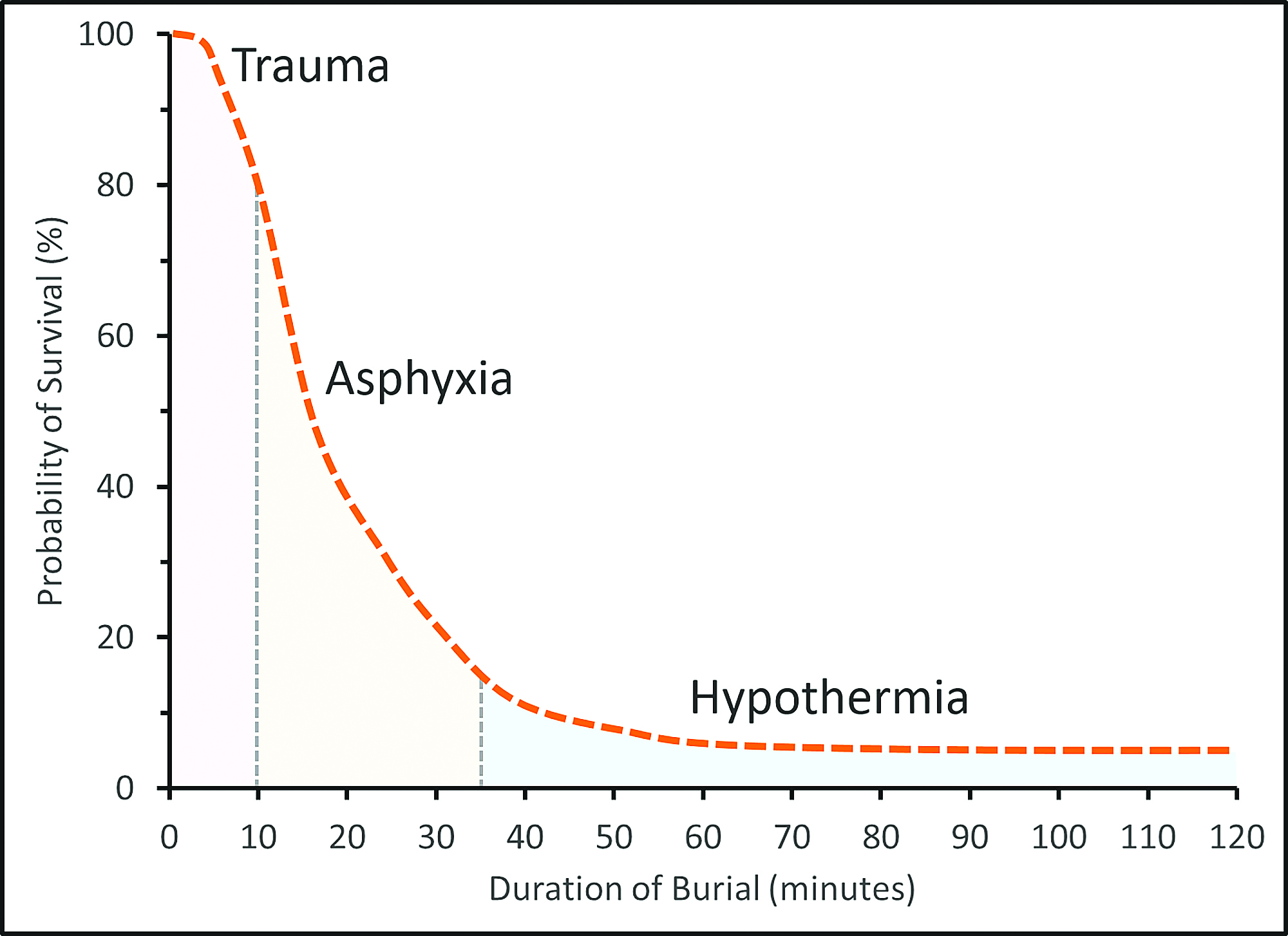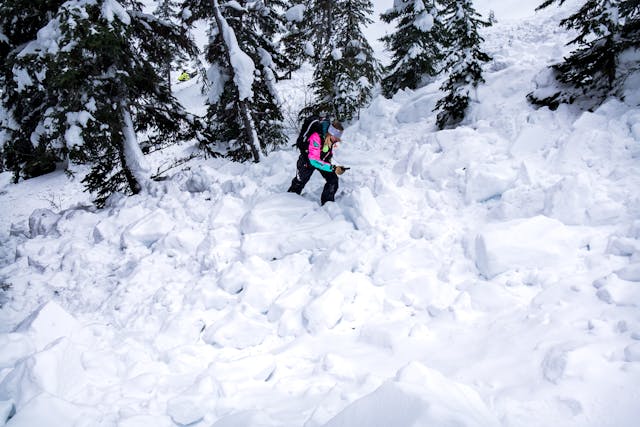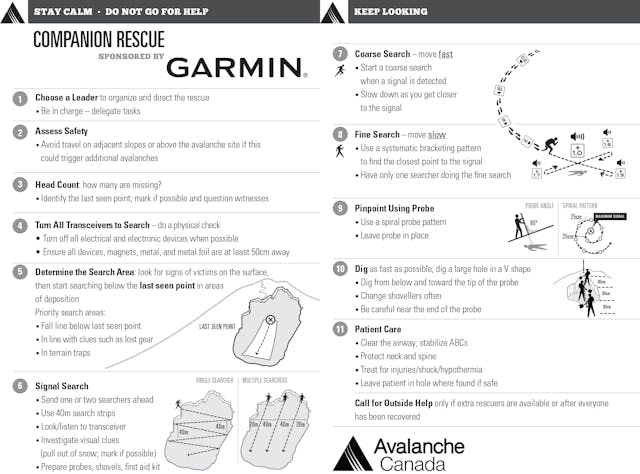- Date
- Monday, December 20, 2021
How to add realism to your companion rescue practice so you're ready for the real thing.

- Credit
- Forecast ski Magazine
A screenshot from a video of Chris Rubens performing a real avalanche rescue near Revelstoke in January 2021. The video is a testament to the value of practicing companion rescue.
'Practice makes perfect. Better yet, practice makes progress. Practicing companion rescue is an ongoing part of being an active backcountry user. It builds muscle memory we can tap into when it gets real, and it can always be worked on to refresh and recalibrate.
In a recent Avalanche Canada webinar, I had the chance to chat with pro skier and Avalanche Canada ambassador Chris Rubens about a real companion rescue that happened in January 2021. Chris talked about getting into a “flow state” during the incident and how he felt like “auto-pilot” took over. This is a best-case scenario—so long as your auto-pilot knows what to do. We found out that Chris’ auto-pilot knew exactly what to do.
“We know now because (the duration of the entire rescue) was only 90 seconds,” Chris told the watching audience. “So many different thoughts go through your head, but it was really going through exactly what we practice so much, but not even really thinking about it.”
The big take home for me in this story is that this was the first time Chris had ever used his transceiver in a real incident. But it was clear to everyone watching that his training had paid off. Chris was able to see the big picture and act quickly and efficiently thanks to his years of experience and diligent practice in companion rescue. This is crucial, because you have just 10 minutes when the odds of recovering a buried victim alive is at 80%. After that 10-minute window, the chances of survival drop steeply.

- Credit
- Avalanche Canada
The avalanche survival curve shows the odds of surviving an avalanche drop rapidly after 10 minutes.
We learn so much from other people’s rescue stories and I see it as a free lesson that we all can get better from. There is some great GoPro footage from Chris’s incident and watching from this perspective helps us build a realistic picture of what it would be like to be doing a live companion rescue. Check out this edit of the rescue by Forecast Ski Magazine.
How to Make Practice Count
One of the biggest challenges with companion rescue practice is making the stakes seem real so you can do it effectively and learn where you need work. Adding a bit of realism can go a long way to finding those gaps in your plan and skill set. Here’s how we do it as professionals:
When we set up a practice site we try to work in snow that is realistic, with a scuffed up area tracked by sleds or skis, or—even better—a disturbed area like an old debris pile. Ideally we practice on a slope, not just flat ground, and an area preferably over 100 m long and 100 m wide.
We start simple by burying one transceiver deep enough that we have to work to find it. If the transceiver is buried 10 cm under the surface in a glove, that is pretty easy. Instead, we bury the transceiver in a bigger target, like a big duffle. If we are feeling really ambitious, we use a dummy (you can make your own with an old set of coveralls). This let’s you really feel the difference between a probe strike on the ground and one on a soft target.

- Credit
- South Rockies Field Team
One good way to make your practice realistic is to bury the target in old avalanche debris. Just make sure there's no risk of avalanche if you do.
We always keep our gear with us (gloves, poles, pack, etc…) and practice with our pack on and all the tools we need. We split our time between searching as a solo rescuer and as a team with a leader. We learn by practicing with the same people we ride with and figure out who will likely do what in a scenario. Some people are just naturally the leader of the group, or the fastest shoveler, or the best rider. It’s good to know that going into a real scenario.
The whole scenario is different if you are moving up or down the slope so we try and practice doing both. Practicing a scenario first from the bottom and then from the top (or vice versa) is a great way to maximize a training day. This is especially true when we do our sled scenarios.
Practicing in realistic terrain can be hard to make happen but it will be the highest value scenario you do. Getting into character and really trying to visualize scene safety, high points, escape routes, and your mental map of the scene all help make it feel as real as possible.
If we start far enough away that we don’t have a signal from the beginning, we get the added bonus of doing a signal search practice. It gives us a chance to flow through the whole progression: signal search, coarse search, and, finally, fine search. The Companion Rescue Card is a great reminder of the sequence of steps.

- Credit
- Avalanche Canada
As the season goes on and we get more familiar with the simple scenarios, we introduce more complexity to our practice sessions, such as multiple burials, deeper burials, and close burials. We start to intentionally introduce transceiver interference and practice problem solving so we can reduce the chance of it happening in real life. When it gets tricky or there are things that don’t work, these are direct learning moments. We debrief and we try to identify the problem without blame to see how we all can do better next time.
Most of all we make it fun. If you are the competitive type, time yourself and your friends and make it a race against the clock. Keep it light and practice often. Bury a beverage or a favorite chocolate bar along with the transceiver as a reward for digging up the target. Most importantly, make sure your partners practice with you—your life depends on them.